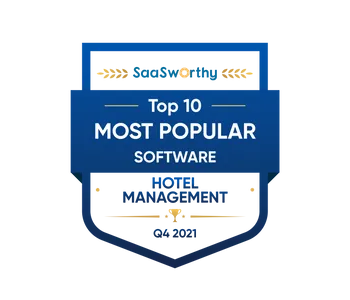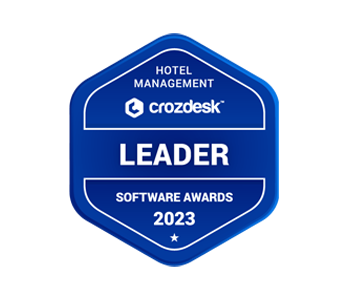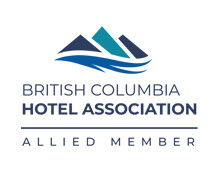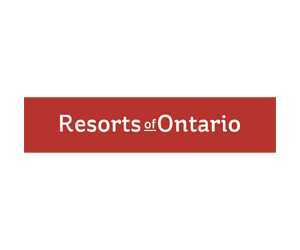We’re in an era where information is literally at our fingertips whenever we need it. Guests desire the same immediacy when it comes to hotel communication, too. But if that communication doesn’t meet their needs, then you may as well have not sent anything at all. What’s a hotelier to do? By sending the right information at the right time, you’ll delight your guests, gain their loyalty and foster repeat bookings. Here, you’ll learn about the kinds of messages your hotel should be sending to guests, and the dos and don’ts for guest communications. Don’t worry! Guest communication doesn’t need to be complicated or a lot of work!
Messages to Send to Hotel Guests
There are six main types of messages hotels should send during the guest relationship lifecycle, from pre-arrival emails to post-stay emails and everything in between. It’s useful to look at each type of message and its purpose before delving into the dos and don’ts. Guest messaging may be in the form of email, which is the most popular, or SMS, which is growing in popularity, or both.
| Type of Message | Timing | Content |
| Booking confirmation | Immediately upon booking | Contains all relevant booking information, such as check-in and check-out times. Include essential information like cancellation policies and COVID-19 protocols. Consider including an upsell offer, for example, a room upgrade, activity package, or in-room offering (such as chocolates and wine on arrival). |
| Pre-arrival | 1-2 days before check-in date | Remind guests about their upcoming stay, policies, and protocols. Use the opportunity to upsell, include helpful links for more information (such as specific blog posts), and, if applicable, invite the guest to register online before their arrival to save time at the front desk. |
| Check-in | Check-in day | Send a friendly welcome to guests, remind them of their check-in time, and if your hotel offers self check-in, include check-in instructions. |
| During stay | Once daily max | Email or text to ensure guests are comfortable. Marketing messages are generally not welcome. |
| Post-stay | -Upon check-out (paperless invoice) -Thank you/feedback request, within 3 days | Send a paperless invoice immediately upon check-out with a proactive thank-you message from management, inviting the guest to email if they have any issues. After three to seven days, send a review request. |
| Retention | -Newsletter, monthly to quarterly -Special offers sparingly, such as seasonal offers or booking anniversary, or personalized relevant dates | Foster loyalty and repeat bookings with newsletters and special offers. |
The Dos of Guest Messaging
Digital communication has made it easier than ever to stay in touch with your hotel guests. We’ve detailed the main important points to remember when it comes to communicating with your guests, whether that’s through email or SMS.
DO:
- Reach out to guests at the right time: Messages must be timely or they’re irrelevant. For example, a booking confirmation sent immediately after a booking fosters confidence. A booking confirmation email received a day or two after a reservation can cause worry and confusion.
- Use simple and clear communication: In addition to clear and concise language, ensure text is formatted in a way that’s easy to read. For emails, use a standard font, short sentences and paragraphs, and break up text with headings.
- Personalize: Address guests by name and send relevant information and offers in order to add personalization to your guest messaging. Email templates can be set up in your property management system (PMS) and automatically personalized and triggered based on reservation data. By integrating your PMS with CRM software or guest messaging platform, you’re also be able to create guest segments for even greater personalization, such as sending relevant offers like romance packages to guest couples, or specific discounts for families during school holidays.
- Use consistent branding: Match language and tone with your website, blog, and social media. A consistent experience across all customer-facing channels builds guest confidence. This also goes for the colors and images you choose.
- Use inclusive language: As a hotelier, we know you work hard to make all your guests feel welcome. Using inclusive language is a subtle change that can make a big impact for guests. For example, when talking about family packages, refer to the “parents” rather than “mom and dad.” For more on this, check out this article about Front Desk Inclusivity by TravelMedia Group.
- Upsell and remarket: Use guest messaging as an opportunity to upsell but in a way that’s helpful. A pre-stay email may include the opportunity to pre-order a charcuterie platter or a movie night package. As guests dream of their upcoming stay, make it easy for them to create their perfect stay. Once guests have stayed, keep the lead “warm” and stay in touch with marketing emails. Again, offers must be relevant for your guest segments—if not, they fall into spam territory.
- Open lines of communication: Make it easy for guests to get in touch and ensure your reply email and SMS number are being managed in a timely manner in order to respond as soon as possible. When appropriate, include the manager’s direct email address, such as for the post-stay thank you email. And always include a phone number for those who prefer voice communication. For communications sent during the guest stay, include an SMS number and email where guests can contact the front desk; in addition to being able to pick up their phone for help, some guests prefer digital hospitality.
- Delight: The main goal of each and every single piece of guest communication should be to delight. Keep that word in mind as a guiding light and you can’t go wrong. This includes relevant offers, useful information, and helpful ideas. Think of it as bringing front-of-house hospitality into your messages. Ideas we love include offering to make restaurant reservations, a heads up about special area events, and surprise offers such as a VIP drink on the house upon arrival.
- SMS: While we’ve mentioned SMS messaging throughout, it warrants its own point. As guests are more comfortable than ever with texting, make this a mode of contact if guests prefer. We love the application of SMS especially for on-sight communication to contact housekeeping for extra towels, or for room-service, or to check with guests if they need anything else.
- Automate messaging: Guest messaging is only as successful as its system integrations. You can’t up your guest messaging game without automating the bulk of your communication. Do this using customizable email templates in your PMS or through integrating your PMS with an email platform to send personalized messages based on routine triggers and reservation information.
The Don’ts of Guest Messaging
The don’ts of guest messaging are straightforward and don’t require too much explaining, since they’re quite common sense if you refer back to your ultimate goal of providing delight for your guests.
DON’T:
- Do nothing: Worst case scenario, you don’t send any emails. Since communication is expected, no news is bad news—leading to confusion and bad impressions.
- Be vague: In the spirit of being useful, be specific and concise but never vague in your email communication. Doing so will only create more work in the long run when you have to field more inquiries in response. If you are getting a lot of inquiries, it’s time to reassess your emails.
- Give TMI: Information gets lost in long blocks of text and overwhelms guests. A general rule of thumb is to reduce whatever you write by 30%!
- Be generic / be impersonal: Messaging that doesn’t mention your guests by name or refer to specific dates of stay not only comes across as impersonal but suspicious. It’s not exactly a way to build trust and loyalty! Irrelevant messages, especially marketing ones, are also a turnoff. Avoid this by providing specific offers and information that are relevant to your guest segments.
- Spam: Irrelevant emails are considered spam, as are too many emails! Find the right balance, especially when it comes to post-stay emails, by carefully monitoring email open rates and click rates. If you’re not meeting industry benchmarks, consider the ‘dos’ on this list and scale back your frequency.
The grand takeaway? Focus on delighting your guests in your guest messaging, and simplify your communication through automation. By using a PMS with automated messaging, you’ll be able to follow the rules for delightful communication in a timely manner with little effort. Automation is a wonderful way to increase your guest communication while streamlining your operations at the same time—that’s probably the biggest ‘do’ of them all!




























